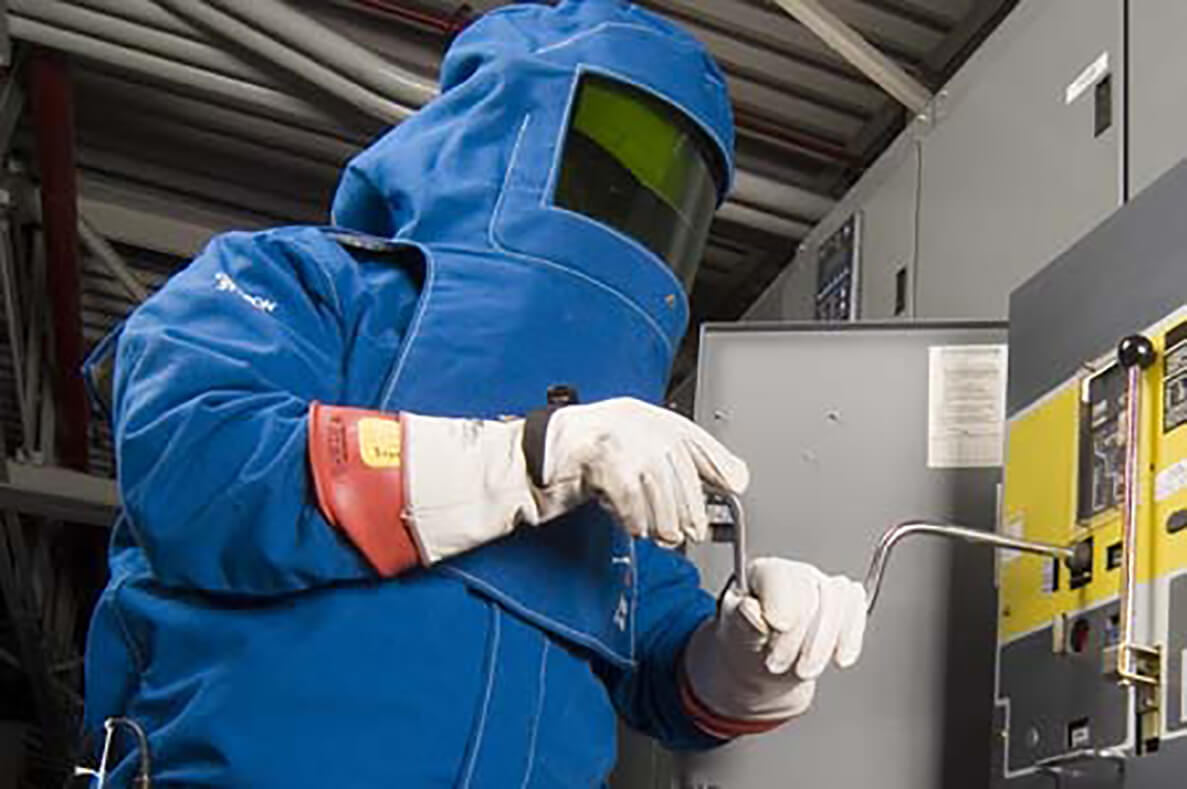Well-Rounded Electrical Safety Program Mitigates Risk
By an EAD Electrical Engineering Manager
While all three types of electrical hazards (shock, arc flash and fire ignition) are dangerous and potentially fatal, arc flash burns can  be some of the most devastating injuries that workers suffer.
be some of the most devastating injuries that workers suffer.
Arc flashes occur when a flash of electrical current leaves its intended path and travels through the air from one conductor to another or the ground. Caused by any one of four factors, electrical arcs produce some of the highest temperatures known to occur on Earth, up to 35,000 degrees Fahrenheit (four times the sun’s surface).
The heat vaporizes all materials within immediate range, resulting in arc spray droplets of high-speed, molten metal up to 10 feet or more from the blast site. The pressure created by the arc on a human chest can be higher than 2,000 lbs./square foot. Arcs in enclosures, such as Motor Control Centers (MCCs) or switchgear, magnify the blast and energy transmitted as the blast is forced to the open side of the enclosure.
OSHA estimates that more than 2,000 people are treated in burn centers with severe arc flash injuries each year. Between five and ten arc flash explosions occur daily in U.S. facilities. The injuries can be severe: third-degree burns, blindness, hearing loss, and nerve damage. Even 10 feet away, a person can suffer severe burns.
So, we know arc flash is more common than we’d like to think and dangerous to workers. But, what can plant managers and electrical maintenance workers do to mitigate arc flash risk?
Safe electrical work begins with proper planning, engineering, design, installation, and testing of new and replacement equipment. During the life of electrical equipment, it must be appropriately operated, maintained, and tested according to the manufacturers’ recommendations and industry standards. When the equipment’s service ends, ensure it is removed and disposed of safely by environmental and safety regulations. If left in place, abandoned equipment can contribute to the hazard.
Remember, all organizational levels need to be involved with electrical safety. Facility owners must develop a site-specific Electrical Safety Program. A facility’s management must develop facility-appropriate electrical safety procedures that comply with industry standards, train employees on those procedures, follow the approved procedures, and update them as needed to provide a safe environment. Electrical workers must follow safe practices and procedures as directed by facility management. Non-electrical workers must know where electrical hazards are within the facility, avoid hazardous areas and activities, and comply with facility procedures.
OSHA applies the National Electrical Code and (NEC) National Fire Protection Agency (NFPA) code 70E to determine if a facility meets requirements to provide a safe working environment. The code requires the owner to:
- Update the arc flash study update every five years or more often for significant changes
- Re-train electrical workers every three years
- Audit the Electrical Safety Program every three years
- Annually audit field work with changes to the Electrical Safety Program if procedures are not being followed
If an arc flash study has not been performed, NFPA70E provides a set of tables. However, it requires information about the electrical system that can only be provided by an A.C. and D.C. systems’ electrical study. But, an arc flash study may also reduce the level of PPE the tables require. NFPA 70E also provides a sample Job Briefing and Planning Checklist to document risk evaluation and planning.
When selecting a third party to perform an electrical audit, most firms use “generic” circuit breakers and settings. This practice can lead to false information and increased risk. Use a third-party contractor that performs an analysis using specific product information to ensure accuracy.
To learn more, visit our Arc Flash and Electrical Safety Services page If you’re interested in EAD providing arc flash study or electrical one-line updates, contact our team at 402.884.8650 or visit our contact us page to send us an email.


